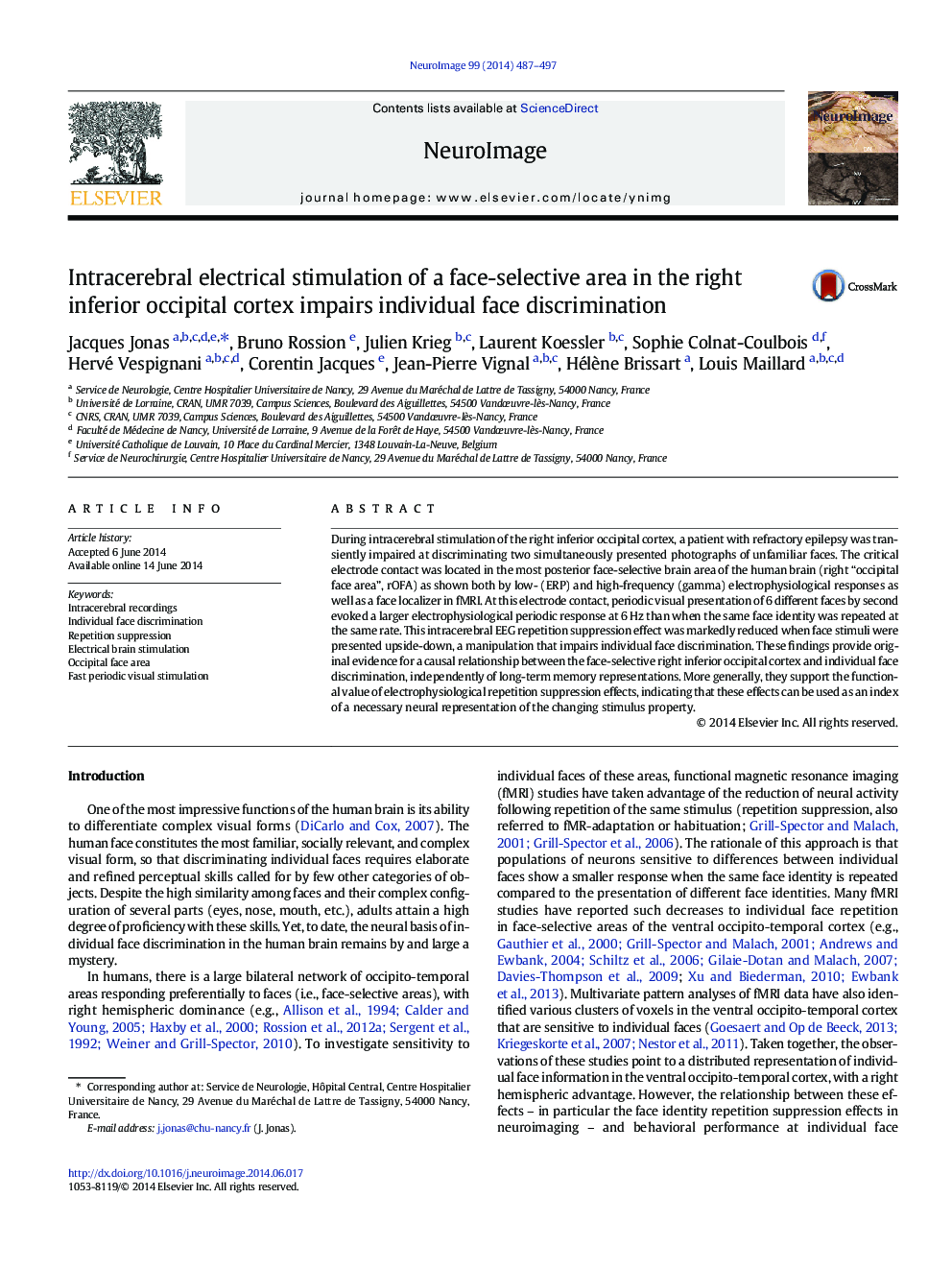| Article ID | Journal | Published Year | Pages | File Type |
|---|---|---|---|---|
| 6027149 | NeuroImage | 2014 | 11 Pages |
â¢Electrical stimulation of the right OFA impairs individual face discrimination.â¢There is a causal link between the right OFA and individual face discrimination.â¢Repetition suppression with periodic visual stimulation is functionally relevant.
During intracerebral stimulation of the right inferior occipital cortex, a patient with refractory epilepsy was transiently impaired at discriminating two simultaneously presented photographs of unfamiliar faces. The critical electrode contact was located in the most posterior face-selective brain area of the human brain (right “occipital face area”, rOFA) as shown both by low- (ERP) and high-frequency (gamma) electrophysiological responses as well as a face localizer in fMRI. At this electrode contact, periodic visual presentation of 6 different faces by second evoked a larger electrophysiological periodic response at 6Â Hz than when the same face identity was repeated at the same rate. This intracerebral EEG repetition suppression effect was markedly reduced when face stimuli were presented upside-down, a manipulation that impairs individual face discrimination. These findings provide original evidence for a causal relationship between the face-selective right inferior occipital cortex and individual face discrimination, independently of long-term memory representations. More generally, they support the functional value of electrophysiological repetition suppression effects, indicating that these effects can be used as an index of a necessary neural representation of the changing stimulus property.
